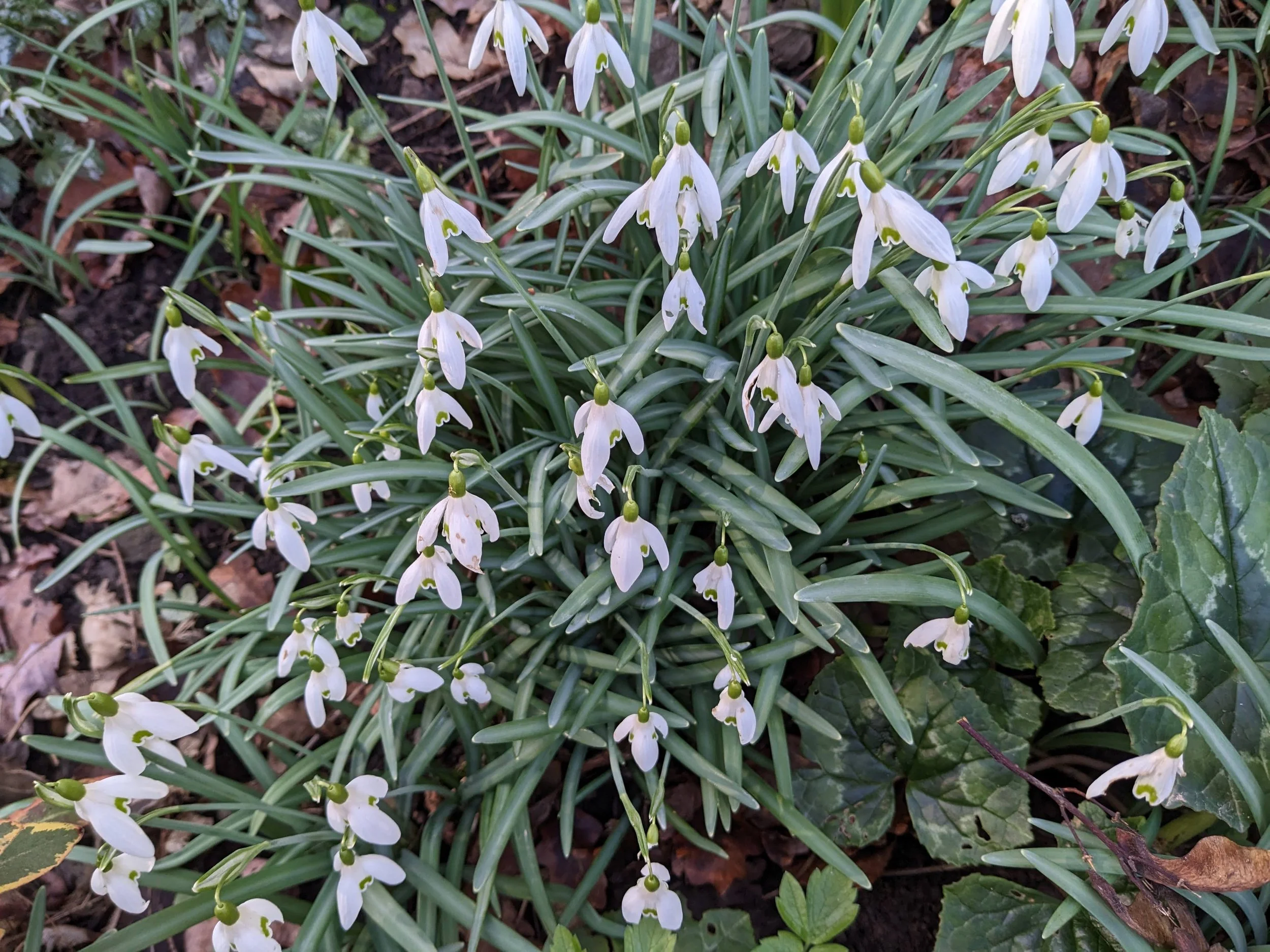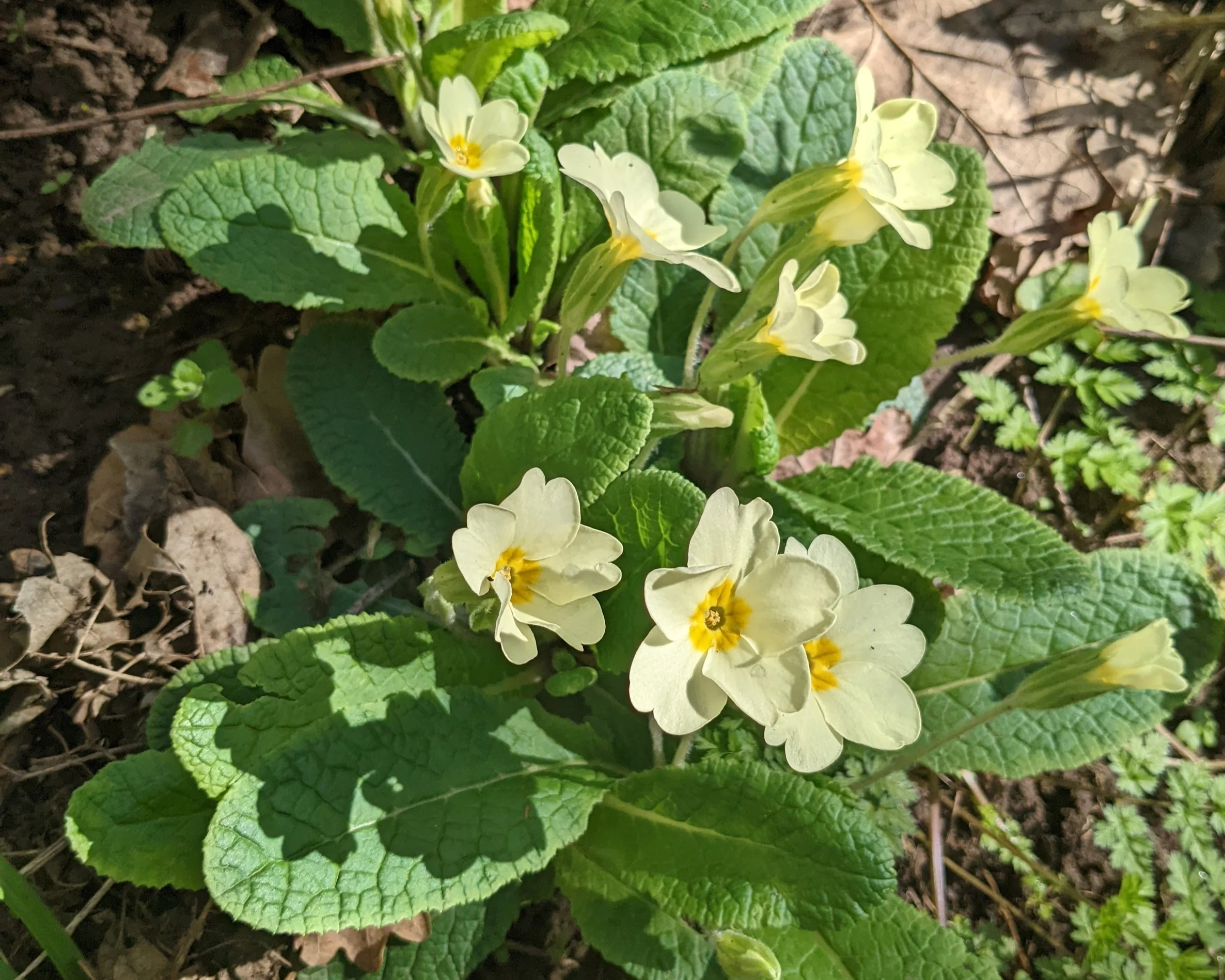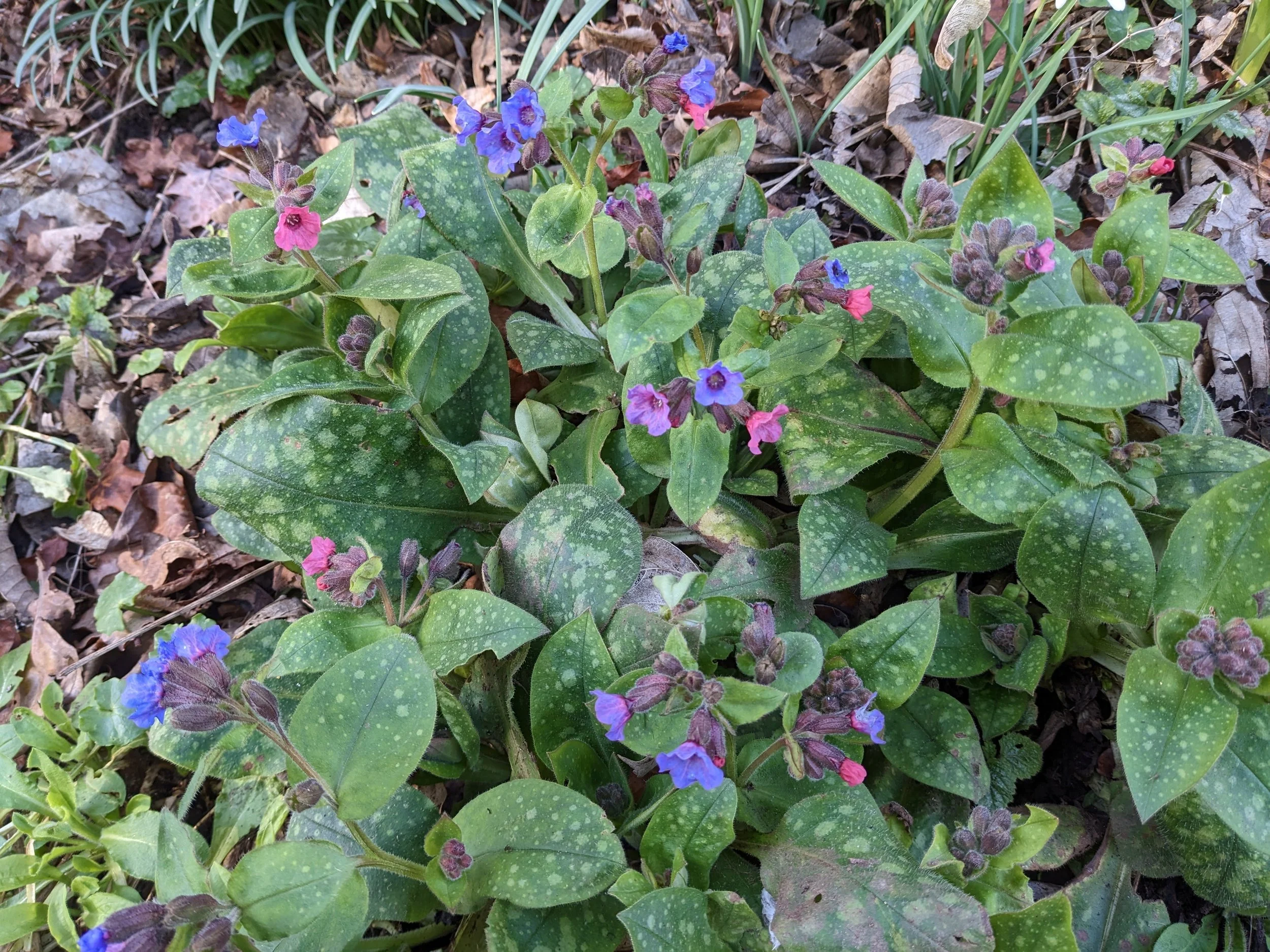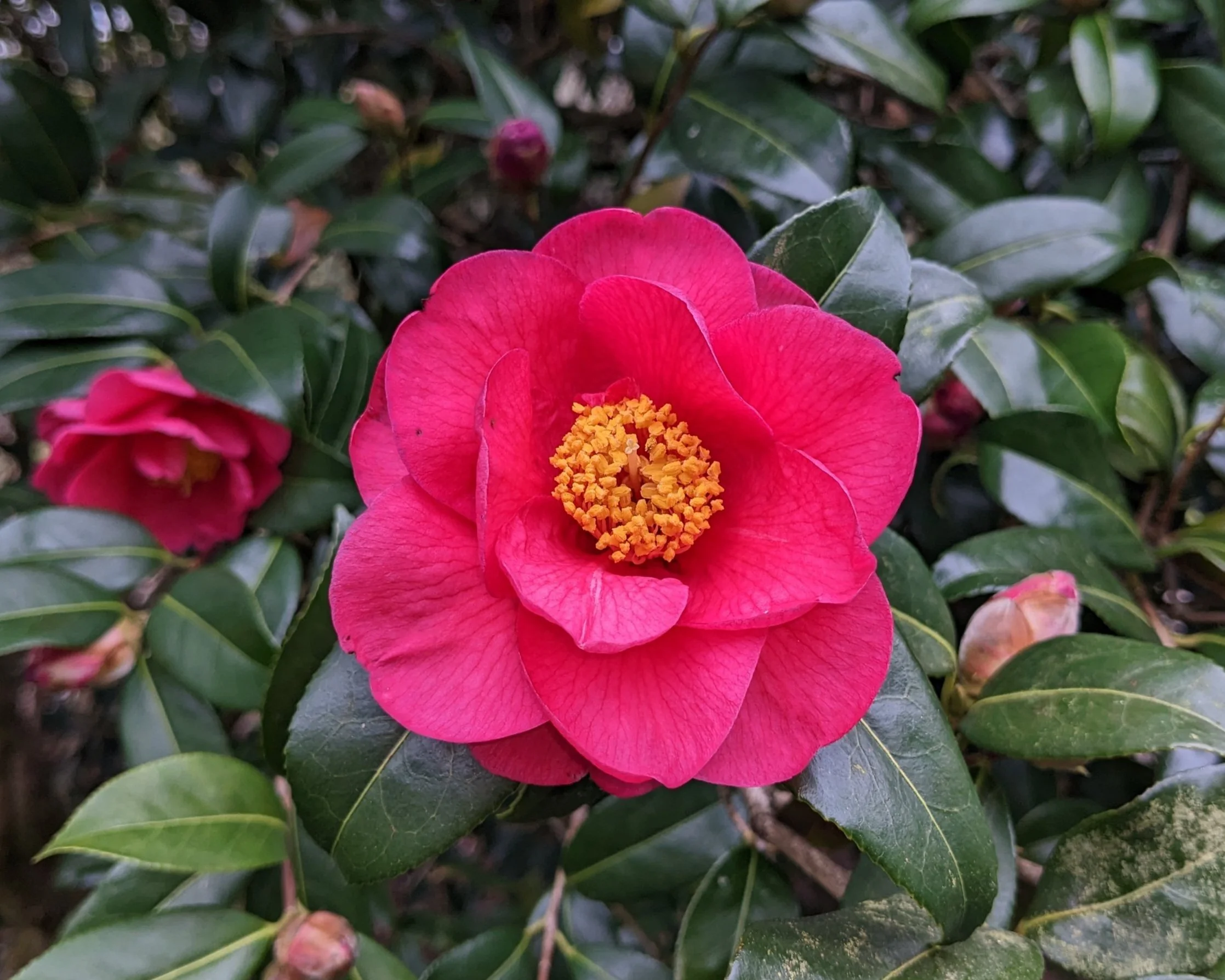Seven flowers to cheer up your February garden
It can start to feel like winter has outstayed its welcome this time of year, and one way to bring a bit of joy is to include early flowering plants in your garden. Something for you to enjoy and also great for the early emerging bees.
Snowdrops (Galanthus)
In my mind these little white flowers are always the first sign that winter may not last forever and spring will eventually be here. There are many, many cultivars out there for the budding Galanthophile, but I will generally go for good old Galanthus nivalis. If you do want to try something a bit more fancy then there are definitely options to splurge on. The most expensive snowdrop bulb ever bought was sold for £1,850 in 2022!
Hellebores
Once you discover these lovely flowers you’ll notice them everywhere at this time of year. Cut back last year’s slightly tattered leaves to let the flowers shine, and fresh new leaves will soon grow. The heads do tend to nod downwards so one way to really enjoy the full beauty of the flowers is to pick some for indoors and float them in a bowl of water.
Helleborus X hybridus 'Smokey Blue'
Witch hazel (Hamamelis)
A fantastic large shrub/small tree for the garden. The yellow, orange or red spidery flowers appear before the leaves and are wonderfully scented.
Hamamelis x intermedia 'Orange Beauty
Primrose (Primula vulgaris)
A plant most of us can identify from childhood – naturally it would occur in woodlands so consider that when choosing where to plant it in your garden. If they are happy they’ll self-seed and spread.
Pulmonaria
A good choice for a shady spot; there are different options that vary by the amount of white speckling on the leaves and the colour of the flowers. Two of my favourites are Pulmonaria saccharata ‘Mrs Moon’ which has distinctly white dotted leaves and flowers that change from pink to lilac-blue, and Pulmonaria ‘Blue Ensign’ which has pure green leaves and amazing deep blue flowers.
Camelias
If you like large showy flowers then camelias are for you, however you’ll need some specific conditions to make this an option for your garden. The main consideration is the pH of your soil, as Camelias need acidic soil to thrive. If you don’t have acidic soil but can’t do without this shrub then they can be grown in a pot, in ericaceous compost (make sure it’s peat free). Read our blog on testing your soil pH if you’re not sure what kind of soil you have. Camelias also need a sheltered spot in part or dappled shade where they won’t be hit by morning sun, which can damage flowers buds after a frost.
Clematis cirrhosa 'Freckles'
I include this on the list with a pang of regret – it’s something I’d love to be able to include in my own garden but I don’t have an appropriately sunny wall so I’ll have to carry on lusting over it as I walk past other people’s front gardens. The speckled flowers are followed by lovely silky seedheads.






